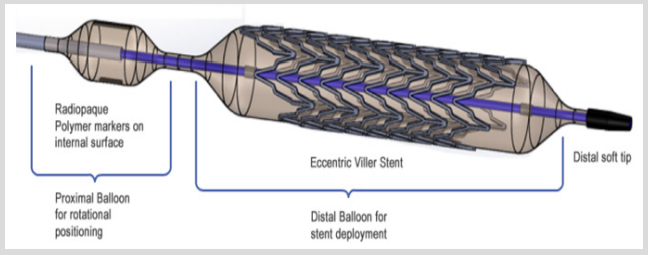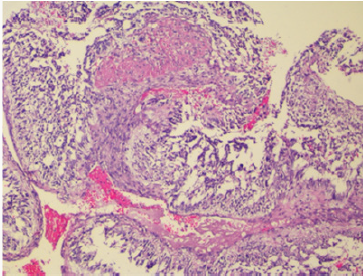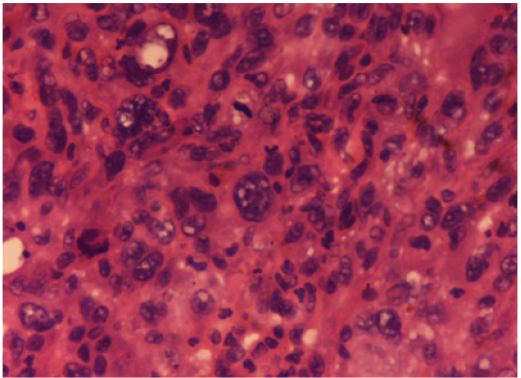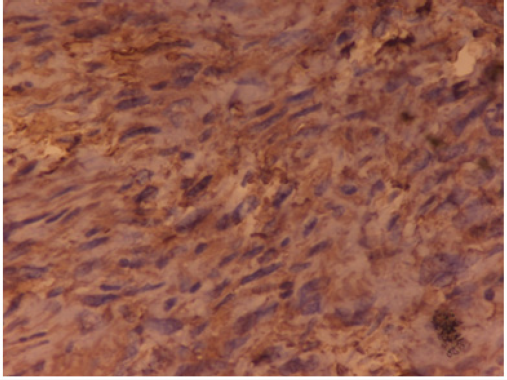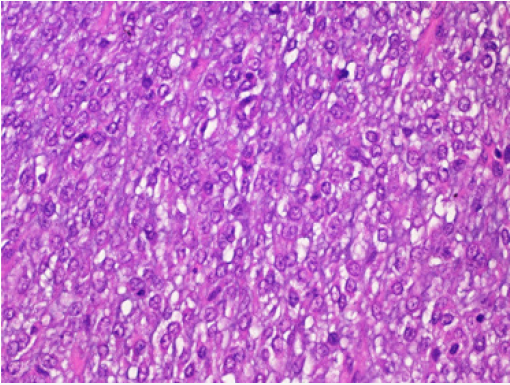Lupine Publishers | Journal of Health Research and Reviews
Abstract
The article surveys some significant trends in the textile wound
dressing during recent years. An ideal wound Dressing need
to be redefined based on the nature of wound and wound classifications.
Since generations, wound have been defined as selfhealing
process, but chronic wounds and other wound requires handling and care
from different parameters like moist conditions,
biocompatibility, microbial infection to mention a few. Bioactive
dressings based on different materials sodium alginate, chitosan,
hydrocolloid, iodine have been explored. The future of fiber technology
for medical applications depends largely on the future needs
of our civilization. The use of new fibers for healthcare textiles
application has increased rapidly over the past quarter of a century.
With the recent advances in tissue engineering, drug delivery, and gene
delivery‐ alginate, chitin/chitosan and their derivatives
present a novel and useful class of biomaterials. Hence small changes in
their molecular structure can bring large changes in
their interactions with components of biological tissues or drugs. These
polymers are excellent candidates for applications in the
biomedical field because of their versatility, biocompatibility, bio
absorbability and significant absence of cytotoxicity. Modern
wound dressings combine medical textiles with active compounds that
stimulate wound healing while protecting against infection.
Electrospun wound dressings have been extensively studied and the
electrospinning technique recognized as an efficient approach
for the production of nanoscale fibrous mats.
Keywords: Electrospun polymeric dressings; Wound healing; Bioactive; Polysaccharides
Introduction
Human body has strong immune system with capabilities
of self-healing. The protective layer of the skin protects the body
against the external environment. The important layers of skin
are Epidermis (outermost layer), Dermis (middle layer) and
subcutaneous fat (deepest layer). The Epidermis consists of dead
cells of keratin, which makes this layer water proof whereas dermis
consist of living cells, blood vessels and nerves running through
it, which provides structure and support. The subcutaneous fat
layer is responsible for insulation and shock absorbency [1]. In
normal skin, there exists an equilibrium between epidermis and
dermis [2]. Wound dressing design and fabrication are important
segments of the textile medical and pharmaceutical wound care
market worldwide. In the past, traditional dressings were used
to simply manage the wound, to keep it dry and prevent bacterial
entrance. Nowadays, the fabrication of wound dressings aims to
create an optimal environment that accelerates wound healing,
while promoting oxygen exchange and intensively preventing
microbial colonization [3]. The use of natural fibers in medical
applications spans to ancient times. These fibers afford a bioactive
matrix for design of more biocompatible and intelligent materials
owing to their remarkable molecular structure. Oligosaccharides
and polysaccharides are biopolymers commonly found in living
organisms, and are known to reveal the physiological functions
by forming a specific conformation. There has been an intensified
effort in recent years in identifying the biological functions of
polysaccharides as related to potential biomedical applications.
Wound Dressings of Third Generation
Wound is defined as any cut or break in the layer of skin.
The normal process of wound healing starts operating once the protective barrier is broken. Majority of wounds heal without any
complication. because cells on the surface of the skin are constantly
replaced by regeneration from below with the top layers sloughing
off. However, in case of chronic non- healing wounds, there is more
tissue loss and the natural process of healing is disturbed, thus
special care is required for rapid and hygienic healing [4]. This thus
poses the biggest challenge for wound care product researchers
and developers. The purpose or aim of choosing a wound dressing
is to protect the wound from infection, ease pain, promote healing
and to avoid maceration. Usually, the selection of wound dressing
depends on the type of the wound. Traditionally, different materials
like neem paste, honey paste, turmeric, animal fats, etc. were used
as wound dressing materials. But these traditional or homemade
wound healing methods could not control the infection which
hampers the healing process. Continuous efforts are in progress to
develop wound dressings which can improve the healing process.
Nowadays, different materials are in use for rapid and cosmetically
acceptable healing. Thus materials are being developed with
special emphasis on solving complexities of the healing process,
speedy healing and prevention of scarring i.e., keloid formation or
contractures.
Wound management and wound care has gained importance
in recent years. Global market is flooded with different varieties
of wound dressings. Some of the polymeric materials used in
wound dressings are based on hydrogel materials, sodium alginate,
hydrocolloid, collagen to mention a few. Different wound dressings
are selected based on the type of wounds. The major problem of
exudate management is a matter of concern. Advances have been
made to achieve wound management with better absorption
systems using super absorbent polymers and developing layer
dressing (composite dressings). The various advances made in
wound dressings have been reviewed with special focus on layered
dressings with superabsorbent polymers.
Chitosan Dressings
Chitosan is a valuable natural polymer derived from chitin.
Chitosan is known in the wound management field for its anti-viral,
anti-fungal, non-toxic, non-allergic, biocompatible, biodegradable
properties and helps in faster wound healing but it exhibits
excellent anti-bacterial activity [5,6]. Chitosan dressings show scar
prevention which is the most important criteria in today’s world
of wound dressing technology [5]. Chitosan wound dressing has
excellent oxygen permeability, controlled water loss and wateruptake
capability. There are number of references on chitosan in
wound treatment [6-11]. Wound dressing and wound management
is an active area of research developing biocompatible dressings
with more focus on bioactive materials incorporating growth
factors. Speciality absorbents are the need for treatment of chronic
wounds, highly exudating wounds, and in total cosmetically
acceptable healing.
Electrospun Polymeric Dressings for Improved Wound Healing
Electro spinning has become one of the most popular processes
to produce medical textiles in the form of wound dressings. This is
a simple and effective method to produce nanoscale fibrous mats
with controlled pore size and structure, from both natural and
synthetic origin polymers. This technique has gain much attention
because of its versatility, reproducibility, volume-to-surface ratio
and submicron range [12-14] [2-4]. Recently, functionalizing
these electrospun wound dressings with active compounds that
accelerate wound healing and tissue regeneration has become
the major goal [15]. The rising of antibiotic-resistant infection
agents has increased the need for such therapies. While antibiotics
act selectively against bacteria, dressings functionalized with
antimicrobial peptides (AMPs) act at multiple sites within microbial
cells, reducing the likelihood of bacteria to develop resistance
[16]. The combination of collagen type I (Col I), one of the most
important extracellular. matrix (ECM) proteins to wound healing,
with these AMP-polymer mat systems has yet to be investigated.
Col I has been highlighted as uniquely suited for wound dressing
therapies because of its involvement in all phases of wound-healing
[17]. Thus the combination of Col I with the AMPs would represent
a new step further in the optimization/development of new
generation wound dressings.
Due to the continue rising of antimicrobial resistant pathogens,
the need for engineered alternated treatments for acute to chronic
wound care has increased. As a first strategy to overcome this issue,
AMPs have been loaded onto existing textile medical dressings
to improve their healing and antimicrobial capacities [18]. We
highlighted the most well known AMPs and the most appropriate
methods to functionalize the surface of electro spun mats with
such molecules. This is still a very new formulation and further
research should be conducted. Indeed, long-term therapeutics
using AMPs. functionalized dressings should be carefully evaluated
to prevent the risk of compromising our innate immune defense
and, therefore, the ability to control commensal microbiome and
microbial infections. Functionalizing surfaces with AMPs should
be managed by standardized tests that not only evaluate the action
of the AMPs but as well its stability, releasing abilities and tunable
performance. The level of control in peptide loading and release
timescales that are required in applications that could benefit from
such antimicrobial profile has thus far not been demonstrated.
Because they are still being developed and tested, these systems,
AMPs-polymeric mat, should be cautiously defined so that the
best combination between selected polymer, mechanism of action,
AMPs and immobilization process is achieved. Although Col I has
been extensively used in wound healing and its potential already
demonstrated, the combination with AMPs-polymeric mats systems
has yet to be explored. In a near future, we intend to examine the
synergistic performance of these molecules in the treatment of chronic wounds, namely diabetic ulcers. It is expected that these
new systems aside from acting against the pathogens will also
accelerate the wound healing process by establishing a symbiotic
action.
Role of Polysaccharide Fibres In Wound Management
Polysaccharides appear in many different forms in plants.
They might be neutral polymers or they might be poly anionic
consisting of only one type of monosaccharide, or they might
have two or more, up to six different monosaccharide types.
They can be linear or branched and they might be substituted
with different types of organic groups, such as methyl and acetyl
groups. Other types of polysaccharides isolated from plants
used in the traditional medicine were identified as having their
biologically active sites in the complementary system, the case of
arabinans and arabinogalactans [19]. In moist healing concept,
alginate fiber becomes one of the most important fibers in the
wound dressing [20]. The incorporation of biological agents into
the fiber used for nonwoven wound dressings provide a means for
directly introducing such agents to the wound without a separate
application and with no additional discomfort to the patient. Many
authors discussed the wound healing ability of the alginate fiber
with different modification [21,22]. The Second part discusses
the chitin and chitosan polysaccharides and their applications in
various medical fields. The specialty of chitin and chitosan fiber is,
its high biocompatibility, non toxic and ability to improve wound
healing and therefore it is evaluated in a number of medical
applications10 such as drug delivery wound dressing, etc [23-26].
Alginate in Wound Dressings
Physical and chemical properties of alginate dressing depend
on the relative content of calcium and sodium ions and the relative
concentration and arrangements of the mannuronic and guluronic
monomers. Dressing rich in guluronic acid react readily with
sodium ions and form stronger gels. On the other hand, mannuronic
acid rich dressings form fewer gels. Alginate fibers have a unique
ion exchange property [27]. On contact with wound exudates, the
calcium ions in the fiber exchange with the sodium ions in the body
fluid and as a result, part of the fiber becomes sodium alginate.
Since sodium alginate is water soluble, this ion‐exchange leads
to the swelling of the fiber and the insitu formation of gel on the
wound surface. This Now a days there are various types of alginate
fibers and dressings available, utilizing the diversified properties
of the different types of alginate extracted from different sources
of seaweeds and the availability of many types of salts of alginate,
such as zinc and silver alginate, which are used for zinc‐deficient
people and for antimicrobial properties respectively [28]. Due to
their unique properties and the fact that the dressings can be used
in the dry form or hydrated form, alginate dressings can be used for
a wide range of wounds, providing a cost‐effective treatment that
involves a minimum number of dressing changes.
Chitin and Chitosan in Wound Dressings
Especially using the two polymers in medical applications
has attracted interest because of having a lot of advantages as
being natural renewable resources, being the most abundant
polymeric material in the earth, biocompatibility, biodegradability,
easy availability, nontoxicity, the ability to chelate heavy metals,
Interestingly, some antibacterial and antifimgal activities have been
described with chitosan and modified chitosan derivatives. Due to
the antimicrobial property both Chitin and chitosan has long been
known as being able to accelerate the wound‐healing process. It has
been shown that by applying chitin dressings, the wound healing
process can be accelerated by up to 75% [29]. Textile materials are
very important in all aspects of medicine, surgery and healthcare
and extend of applications to which the materials used because of
the versatility of textile materials. Advances in fiber sciences have
resulted with a new breed of wound dressing, which contributing
healing process in an effective way [30]. The role of polysaccharide
fibres in wound management has been highlighted. Also the
different properties and requirements of various polysaccharide
fibers to the healing of different wounds have been discussed. In
particular special properties of Alginate, chitin and chitosan were
summarized with the various experimental results of different
researchers.
Conclusion
Traditional methods have been continuously worked upon to
deliver better products. Starting from simple gauze dressings in
1900’s to bioactive dressings till today have been worked upon.
Bioactive dressings based on different materials sodium alginate,
chitosan, hydrocolloid, iodine has been covered in this review.
Based on wounds different classifications of type of wounds,
correlation of wounds with wound dressing have also been
focussed upon. This has led to development of interactive dressings
which are further developed as per wound requirement viz.
semipermeable and hydrogel dressings. Efforts are in process to
develop super absorbing and bioactive material for critical wound
care. The conventional primary and secondary dressings have been
replaced by composite dressings composed by 4 to 5 layers with
super absorbing materials incorporated in one of the layers which
accumulates exudates from the wounds and also provides protection
from leakage and thus avoiding cross infections which at times
become a major concern. This article focuses on changing trends in
the area of wound dressings through three decades. Wound healing
rate depends mainly on proper dressing materials. Over the last few
years there has been a rapidly expanding interest in polysaccharides
from both a fundamental viewpoint and also from an applications
viewpoint. With different varieties of polysaccharides in modern
wound dressings, this article discusses the effective utilization
of polysaccharide fibers like alginate, chitin and chitosan for the
medical application, specifically for wound management. Further
it explains the current research status and also summarizes the different findings of researchers. The unique diverse function
and architecture of antimicrobial peptides (AMPs) has attracted
considerable attention as a tool for the design of new anti-infective
drugs. Functionalizing electrospun wound dressings with these
AMPs is nowadays being researched. These new systems have
been explored by highlighting the most important characteristics
of electropsun wound dressings, revealing the importance of AMPs
to wound healing, and the methods available to functionalize the
electrospun mats with these molecules. The combined therapeutic
potential of collagen type I and these AMP functionalized dressings
will be highlighted as well; the significance of these new strategies
for the future of wound healing will be clarified.
For more Lupine Publishers Open
Access Journals Please visit our website:
http://lupinepublishers.us/
For more Research
and Reviews on Healthcare articles Please Click Here:
https://lupinepublishers.com/research-and-reviews-journal/
To Know More About Open Access
Publishers Please Click on Lupine
Publishers
Follow on Linkedin : https://www.linkedin.com/company/lupinepublishers
Follow on Twitter : https://twitter.com/lupine_online

